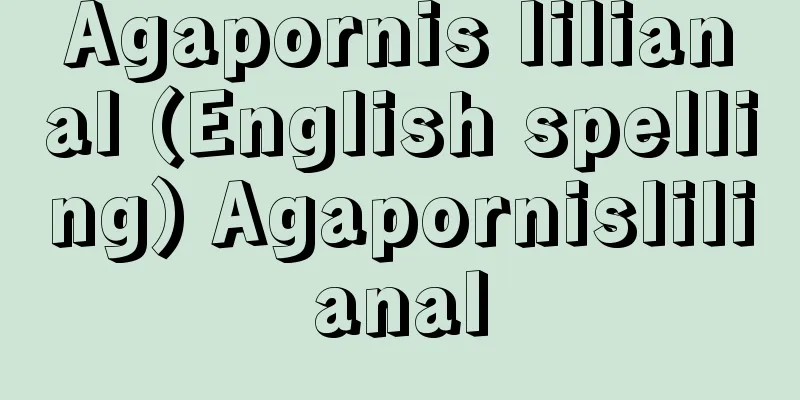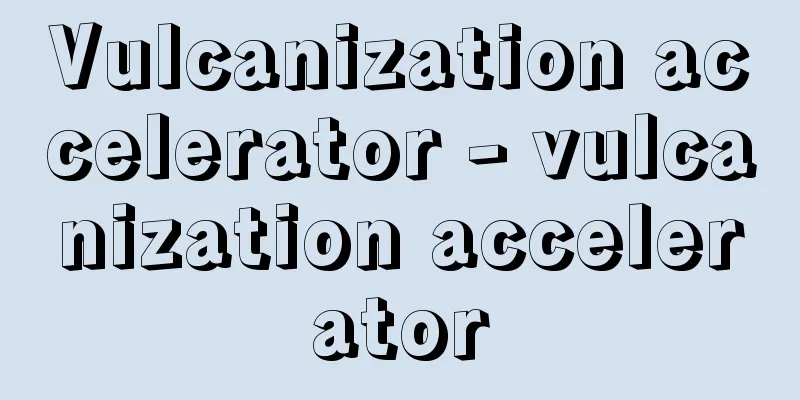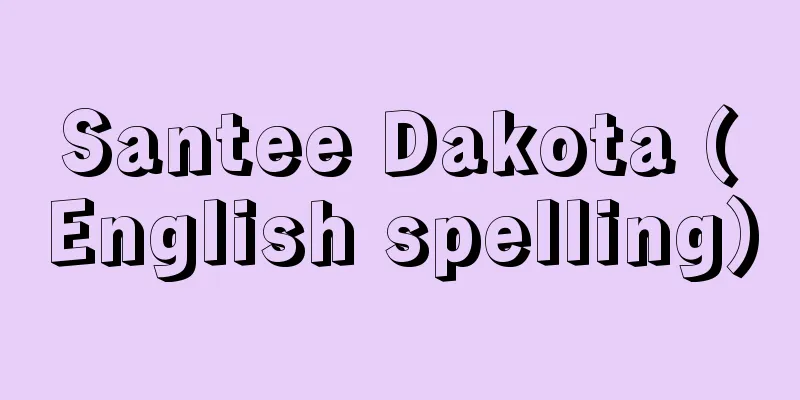Peace education - Heiwakyoiku (English spelling) peace education English
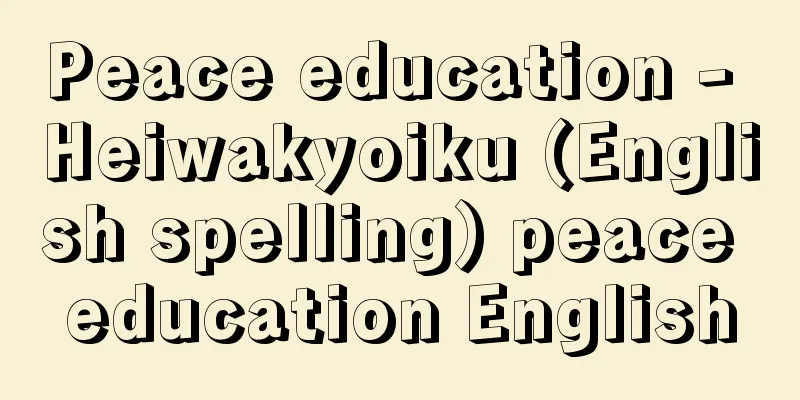
|
Education that aims to foster the mindset and ability to reject war and violence, protect peace, and deal with conflicts and disputes in a peaceful manner. [Hiroshi Sanuki] International peace education movementWorld War I and World War II killed more than 60 million people in total. Reflecting on these events, peace education was born as part of the growing trend to reduce and abolish armaments, abolish nuclear weapons, and create political and economic systems and cultures that would not cause war. In the preamble to the 1945 UNESCO Constitution, UNESCO stated that "Because wars begin in the minds of men, it is in the minds of men that the defenses of peace must be built," and assigned a major role to education in achieving this goal. Since then, UNESCO has issued several resolutions and recommendations on peace education, including the "Declaration on Education for Peace, Human Rights and Democracy" in 1994 and the "General Platform for Education for Peace, Human Rights and Democracy" in the following year, 1995. Furthermore, the United Nations designated the year 2000 as the "International Year for the Culture of Peace" and the years 2001 to 2010 as the "International Decade for the Culture of Peace and Nonviolence for the Children of the World." Furthermore, the United Nations held the first Special Session of the General Assembly on Disarmament in 1978 and has been promoting disarmament education. Disarmament and peace education are an internationally agreed and urgent responsibility, and governments around the world are being urged to make it a reality. [Hiroshi Sanuki] The History of Peace Education in JapanEven before and during the Second World War, peace and anti-war education against the war of aggression was promoted, but it was thoroughly suppressed and silenced by the Peace Preservation Law and other laws. In 1946 (Showa 21), Japan established the Constitution of Japan, declaring, "We are resolved to ensure that the horrors of war will never again be visited upon us by the actions of our government," "We confirm that we have the right to live in peace," and "We pledge to exert all our efforts to achieve these lofty ideals and purposes." The following year, in 1947, the Fundamental Law of Education was enacted, which stated, "The realization of these ideals must fundamentally depend on the power of education." Postwar education, which started from reflection on the war, was deemed to have to be peace education at its core. The first period of the real rise of peace education in Japan was the 1950s. Amid a sense of crisis over the outbreak of another world war under the Cold War structure, voices from around the world wishing for peace were united, and the Stockholm Appeal was adopted in 1950. The Japan Teachers' Union (Nikkyoso) raised the slogan "Don't send our students to war again" (1951), and peace education spread. The book Children of the Atomic Bomb (1951), edited by Osada Arata, caused a great stir both at home and abroad, and education conveying the experiences of Hiroshima and Nagasaki was vigorously launched. In response to the establishment of the Self-Defense Forces in violation of Article 9 of the Japanese Constitution, the struggle against rearmament and military bases also boosted momentum for peace education. The second period was a time when, amid the rapid economic growth that began in the 1960s, the experiences of Hiroshima and Nagasaki were conveyed to children, driven by a sense of crisis that the desire for peace was being lost and that the misery of war and the consciousness of remorse were not being passed down to children. The Hiroshima Institute of Peace Education was established in 1972 (Showa 47) through the strong determination of Hiroshima's atomic bomb-hit teachers. In response to the call from Hiroshima, the Japan Council for Peace Education Research was launched as a national organization in 1974. Furthermore, the peace education system was gradually put in place, with the peace education subcommittee at the Japan Teachers Union's National Educational Research Conference (Kyokenkai) becoming independent. The Hiroshima Institute of Peace Education also published a draft teaching material, Hiroshima (1969-1986), and the development of peace education teaching materials was also promoted. Peace education during this period was also supported by the nationwide and worldwide struggle against the US war of aggression in Vietnam and the rise of the anti-nuclear movement against the deployment of US nuclear weapons, mainly in Europe. The third period was a period of increased interest in peace education, triggered by strong protests from Asian countries (1982) that the truth about Japan's aggression had been concealed in textbook screening, and aimed to uncover the truth about Japan's aggression, and to create historical reconciliation with Asian countries and cooperation and collaboration for future peace based on reflection on the war of aggression. Books such as "The Devil's Gluttony" by Morimura Seiichi, which exposed the history of Unit 731, a germ warfare unit of the former Japanese Army, and "A Journey Through China" (both 1981) by Honda Katsuichi (1932-) also supported the change in public opinion. Regarding peace education in Japan, it has been pointed out that, in relation to Japan's political structure after the Second World War, there are weaknesses in educational efforts regarding the learning of the facts about Japan's acts of aggression and aggression against Asian countries, national reflection on the war, and reparations. Since the 1980s, efforts have been made to overcome these weaknesses. Since the 1990s, peace education has inherited these achievements and, taking into account the new situation of the dissolution of the Cold War structure, discussions have been held on the following issues: (1) In the face of growing calls for Japan to fully reflect on the war, including demands for an apology and compensation to the comfort women, how can we address this issue and how can we pass on this history as a memory for the Japanese people? [Hiroshi Sanuki] Structure and methods of peace educationstructureThe structure of peace education can be divided into direct peace education, which directly deals with issues of war, violence, and peace, and indirect peace education, which deals with the personal and social conditions that create peace. The former focuses on the history of war and peace, the analysis of the actual conditions and causes of the dropping of nuclear weapons and war, the history of efforts to create peace, and wisdom and ideas for eliminating war. The latter can be divided into, first, education that considers ways to overcome the systems, cultures, ideas, and systems of discrimination and oppression that give rise to war and violence, and, second, education that recognizes the preciousness of life and the dignity of the person, opposes violence, and cultivates the demands and power to create consensus and cooperation through expression (communication) and democracy. The idea put forward by Norwegian peace researcher Johan Galtung (1930- ), that overcoming structural violence is the central issue of peace and peace education, positions efforts in this first area as the most proactive form of peace education. The scope of indirect peace education extends to almost all school subjects, and in that sense the perspective of peace education needs to permeate all areas of educational activities. Furthermore, amid the fear that violent impulses and aggression are on the rise among children today, peace education can be understood in the following hierarchical structure. In the midst of fear of bullying and other violence, a situation has arisen in which confidence and vision for peace in society and the world cannot be envisioned without the actual experience (verification) of a peaceful life. Thus, the following goals of peace education can be considered: (1) To develop a sense of pride in oneself and dignity as a human being, the ability to empathize with others as a human being, enhance one's ability to express oneself, develop rich communication skills, and develop the ability to understand one another. methodRegarding methods of peace education, the following issues have come to be emphasized: (1) To unearth and pass on the experiences of wartime suffering, as well as experiences of perpetration and resistance, and the history of friendship and solidarity with Asian countries. [Hiroshi Sanuki] "Encyclopedia of Peace Education Practices," edited by the Hiroshima Peace Education Research Institute (1981, Shunposha)" ▽ "Peace, Human Rights, and the Environment: International Education Resource Collection, written by Horio Teruhisa and Kawachi Noriko (1998, Aoki Shoten) " ▽ "Changing Education: Beyond Violence to the Horizon of Peace, written by Takeuchi Tsunekazu (2000, Sakurai Shoten)" ▽ "All issues of the Quarterly Peace Education journal compiled by the Japan Peace Education Research Council (Meiji Tosho, self-published from issue 18)" ▽ "Quarterly War Responsibility Research, compiled and published by Japan's War Responsibility Resource Center" [References] | | | | | | | | | |Source: Shogakukan Encyclopedia Nipponica About Encyclopedia Nipponica Information | Legend |
|
戦争、暴力を排して、平和を守り、また平和的な方法によって対立や紛争に対処していく考え方と力を育てることを目的とする教育。 [佐貫 浩] 国際的な平和教育の動き第一次世界大戦と第二次世界大戦は、あわせて6000万人を超える死者を出した。その反省にたって、軍備の縮小と廃止、核兵器の廃絶、戦争を起こさない政治システムや経済の仕組み、文化をつくりだそうとする気運の高まりの一環として、平和教育が生み出されていった。ユネスコ(国連教育科学文化機関)は、1945年ユネスコ憲章の前文において「戦争は人の心のなかで始まるものであるから、人の心のなかに平和のとりでを築かなければならない」と述べ、その目的達成のために教育に大きな役割を課した。その後もユネスコは数回にわたって、平和教育に関する決議、勧告を出し、1994年(平成6)には「平和・人権・民主主義のための教育宣言」を、また翌1995年には「平和・人権・民主主義教育に関する総合的行動綱領」を決議している。さらに国連は2000年を「平和の文化国際年」、2001年から2010年を「世界の子供たちのための平和と非暴力の文化国際10年」とした。また国連は1978年に第1回国連軍縮特別総会を開催し、軍縮教育disarmament educationを推進している。軍縮と平和の教育は、国際的な合意かつ緊急の責務として、その具体化が各国政府に強く要請されている。 [佐貫 浩] 日本における平和教育の歴史第二次世界大戦前から戦中にあっても、侵略戦争に反対する平和・反戦の教育が展開されたが、治安維持法などによって徹底的な弾圧を受け、沈黙させられていった。1946年(昭和21)日本は「政府の行為によって再び戦争の惨禍が起こることのないやうにすることを決意し、」「平和のうちに生存する権利を有することを確認」し、「全力をあげてこの崇高な理想と目的を達成することを誓ふ」と宣言し、日本国憲法を定めた。また翌1947年には、「この理想の実現は、根本において教育の力にまつべきものである」とする教育基本法を制定した。戦争反省から出発した戦後教育は、その根本において平和教育でなければならないとされたのである。 日本の平和教育の本格的な高まりの第1期は、1950年代である。冷戦構造の下での再度の世界大戦勃発(ぼっぱつ)の危機感のなかで、平和を願う世界の声が結び合わされ、1950年ストックホルム・アピールが採択された。日本教職員組合(日教組)は「教え子をふたたび戦場に送るな」のスローガンを掲げ(1951)、平和教育が広がった。長田新(おさだあらた)編の『原爆の子』(1951)が国内外に大きな反響をよび、広島、長崎の体験を伝える教育も力強く開始された。日本国憲法第9条に反して自衛隊が創設されたことに対し、再軍備反対、軍事基地反対の闘いも平和教育の機運を高めた。 第2期は、1960年代からの高度成長のなかで、子供たちに戦争の悲惨さや反省の意識が継承されておらず、平和への願いが失われていくことへの危機感を一つのばねとして、ヒロシマ・ナガサキの体験を子供たちに伝えようとした時期である。広島の被爆教師たちの強い決意によって、1972年(昭和47)に広島平和教育研究所が設立された。その広島の呼びかけにこたえる形で、1974年には全国組織として日本平和教育研究協議会が発足した。さらに日教組の教育研究全国集会(教研集会)での平和教育分科会が独立するなど、平和教育の体制がしだいに整えられていった。また広島平和教育研究所から教材試案『ひろしま』が発行される(1969~1986)など、平和教育教材の開発も進められた。この時期の平和教育は、同時に全国的かつ世界的なアメリカのベトナム侵略戦争反対の闘いと、ヨーロッパを中心とするアメリカの核兵器配備に反対する反核運動の高揚とに支えられていた。 第3期は、教科書検定で日本の侵略の事実が隠されているというアジア諸国からの強い抗議(1982)を一つの契機として、日本の加害の事実を発掘し、侵略戦争への反省を踏まえてアジア諸国との歴史的和解と将来の平和のための協力・協同をつくりだす方向が目ざされた、平和教育の高揚期である。旧日本陸軍の細菌戦部隊であった七三一部隊の歴史を暴いた森村誠一の『悪魔の飽食』や、本多勝一(かついち)(1932― )の『中国の旅』(ともに1981)なども、世論の変化を支えた。 日本の平和教育については、第二次世界大戦後の日本の政治構造と関連して、アジア諸国への加害と侵略行為についての事実の学習や国家としての戦争反省、賠償などに関する教育的取組みの弱さが指摘され、1980年代以降、この弱点をどう克服するかの努力が続けられている。 1990年代からの平和教育では、これらの成果を受け継ぎ、また冷戦構造の解体という新たな状況を踏まえつつ、次のような問題点をめぐって議論が展開されている。 (1)従軍慰安婦への謝罪と賠償の要求など、日本の本格的な戦争反省を求める声の高まりのなかで、この課題にどう取り組み、またその歴史をいかに日本人の記憶として継承していくのか [佐貫 浩] 平和教育の構造と方法構造平和教育の構造は、戦争・暴力や平和の問題を直接扱う直接的な平和教育と、平和をつくりだしていく人格的、社会的な条件を扱う間接的な平和教育とに分けることができる。前者は、戦争と平和の歴史、核兵器の投下や戦争の実態と原因の分析、平和をつくりだしていくための努力の歴史、戦争をなくしていくための知恵や思想などが学習の中心となる。後者は、第一に、戦争や暴力を生み出していく差別や抑圧の制度、文化や思想、システムなどを克服する筋道を考える教育と、第二に、命の尊さと人格の尊厳を認識し、暴力に反対し、表現(コミュニケーション)と民主主義を通して合意と協同をつくりだす要求と力を育てる教育に区分することができる。ノルウェーの平和研究家ヨハン・ガルトゥングJohan Galtung(1930― )の提起した構造的暴力の克服こそ平和および平和教育の中心的課題であるとする考え方は、この第一の領域への取組みをもっとも積極的な平和教育と位置づけている。間接的な平和教育の領域は、ほとんどすべての教科に及び、その意味で平和教育の観点は、あらゆる領域の教育活動のなかに貫かれる必要がある。また今日子供たちの間で、暴力的な衝動や攻撃性が高まってきているのではないかという不安のなかで、次のような階層的な構造で平和教育を把握することもできる。いじめなどの暴力におびえるなかでは、平和な生活の実体験(検証)なくして社会や世界の平和への確信と構想を描くことはできないという状況が生まれているのである。そこで、以下のような平和教育の目標が考えられる。 (1)自分への誇りや人間としての尊厳の感覚と、人間として他者と共感しあう力を獲得させ、表現の力を高めコミュニケーションを豊かに展開し、相互に理解する能力を発達させること 方法平和教育の方法をめぐっては、以下のような課題が強調されるようになってきている。 (1)戦争の被害体験とともに、加害と抵抗の体験、さらにはアジア諸国との友好と連帯の歴史も発掘、継承していくこと [佐貫 浩] 『広島平和教育研究所編『平和教育実践事典』(1981・旬報社)』▽『堀尾輝久・河内徳子著『平和・人権・環境 教育国際資料集』(1998・青木書店)』▽『竹内常一著『教育を変える――暴力を越えて平和の地平へ』(2000・桜井書店)』▽『日本平和教育研究協議会編『季刊平和教育』各号(明治図書、第18号より自費出版)』▽『日本の戦争責任資料センター編・刊『季刊戦争責任研究』』 [参照項目] | | | | | | | | | |出典 小学館 日本大百科全書(ニッポニカ)日本大百科全書(ニッポニカ)について 情報 | 凡例 |
Recommend
Aodai (English name) Japanese snapper
A marine fish belonging to the order Perciformes ...
Transposition - Icho (English spelling) transposition English
In Western tonal music, the act of transposing an...
Kennaway, E.
…But in 1915, Japanese scientists Katsusaburo Yam...
Icebreaker - Saihyousen (English spelling) ice breaker
A ship that breaks ice that has built up on the s...
Undersea topography - Kaiteikei
The undulating form of the ocean floor. Generally...
Ariovistus - Ariovistus
…But the growing Roman population of the province...
Sakae Kubo
Playwright and director. Born in Sapporo on Decem...
Rotary instrument - Kaitengi
⇒Gyroscope Source: About Shogakukan Digital Daijis...
John of Holywood
…Years of birth and death unknown. His English na...
Otojiro Kawakami
Actor. Born in Hakata on January 1, 1864. At the ...
National Treasure - Kokuhou
Among cultural properties existing in Japan, such...
Lucien Lévy‐Bruhl
1857‐1939 French philosopher and sociologist. He t...
Engyō - Engyō
Year of death: 29 March 852 Year of birth: Enryaku...
Georges Brassens
French chanson singer, lyricist, and composer. Bo...
Kanazawa Domain
Also called the Kaga Domain. During the Edo period...
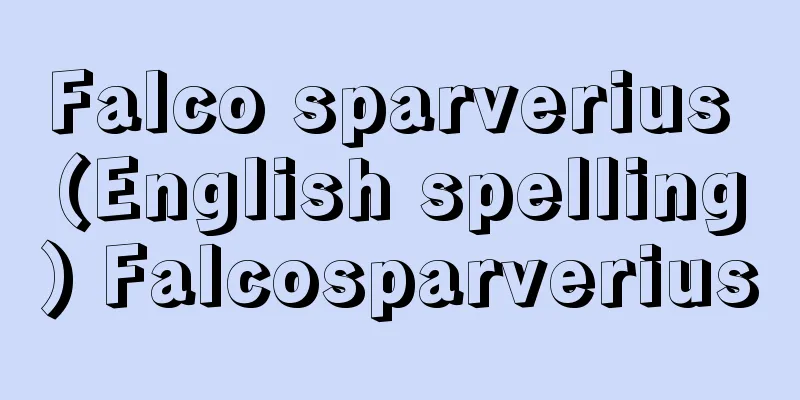
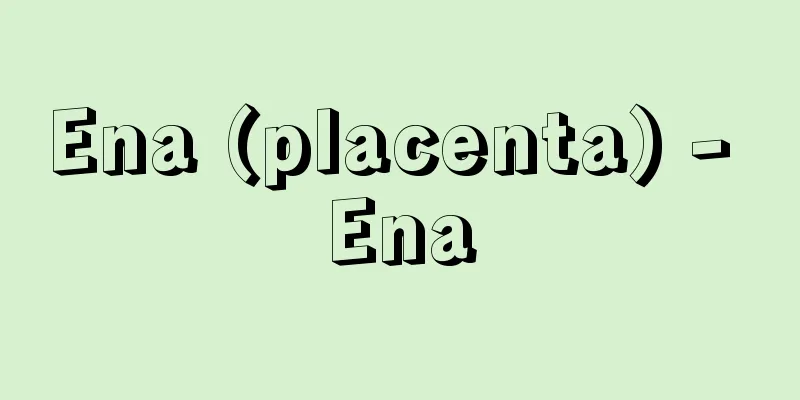
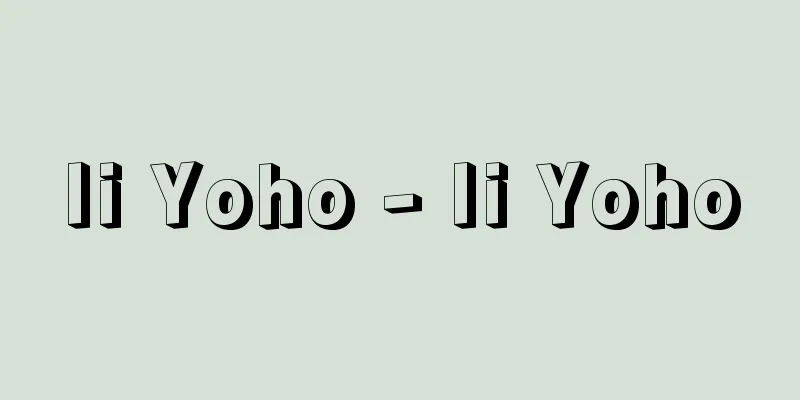
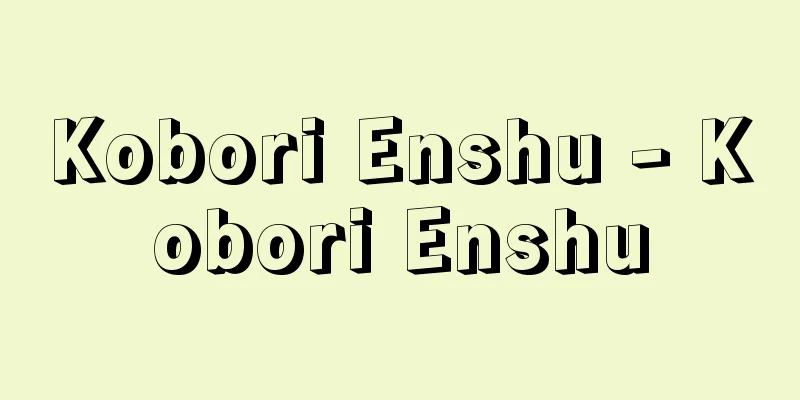
![Musashimurayama [city] - Musashimurayama](/upload/images/67ccfab0f1c74.webp)
